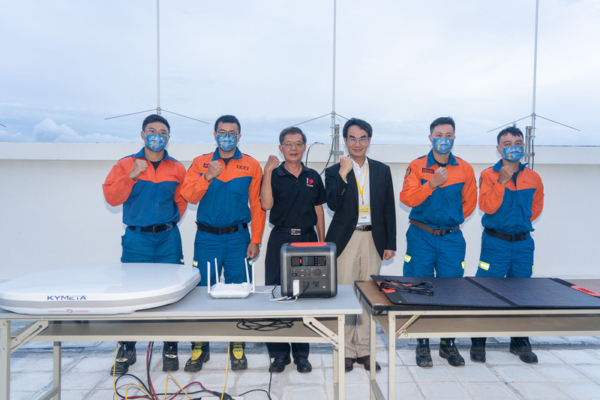The Ministry of Digital Development of the Republic of China stated that it is promoting an asynchronous satellite emergency response network to strengthen Taiwan’s emergency communication capabilities. By the end of this year, it is expected that Taiwan will have low-orbit satellite signals available 24 hours a day, enhancing communication resilience during times of disaster.
To enhance Taiwan’s emergency response capabilities in the face of disasters, the Ministry of Digital Development actively promotes the testing of new communication networks such as asynchronous orbiting satellites and high-altitude communication platforms to conceptually test diverse emergency response networks.
Deputy Minister of the Ministry of Digital Development of the Republic of China, Lin Yijing, led a team on the 23rd to inspect the satellite communication applications at the Taitung County Disaster Response Center and exchange views with the Taitung County Fire Bureau on the diverse communication applications for disaster prevention and response. By uniting the efforts of central and local governments, Taiwan’s communication resilience is being strengthened.
According to the Ministry of Digital Development of Taiwan, when major natural disasters occur, normal communication channels such as landline phones, mobile phones, and internet services may be disrupted or damaged, making emergency communication methods crucial for disaster relief. As the East Rift Valley region is prone to earthquakes and typhoons, establishing more diverse emergency communication solutions is a key focus of disaster preparedness efforts.
During the 2024 Hualien earthquake, the Ministry of Digital Development mobilized emergency response vehicles and low-orbit satellite equipment to assist relief units in establishing emergency communication in the affected areas. Additionally, during Typhoon Soudelor, the ministry responded to requests from the Kaohsiung, Pingtung, and Hualien county governments by urgently providing six sets of satellite communication equipment for their command systems.
The Ministry of Digital Development of Taiwan hopes that by introducing diverse communication technologies, rescue workers can maintain basic communication in challenging environments, allowing the government’s command system to promptly assess disasters and allocate relief resources, effectively ensuring the safety of residents in disaster-stricken areas. The ministry will continue to enhance and innovate digital infrastructure in response to the evolution of emerging communication technologies and external environmental changes, enabling these technologies to maximize their effectiveness in various emergency response scenarios.
According to Central News Agency, as of the end of June this year, the low-orbit satellite OneWeb can provide services in most areas of Taiwan (except for the Dongsha Islands), but signals are not available 24 hours a day, with approximately 40 minutes of communication per hour.
The Ministry of Digital Development of Taiwan pointed out that the medium-orbit satellite SES relies on ground stations in Australia and provides stable service throughout Taiwan. The low-orbit satellite OneWeb relies on ground stations in Guam, Thailand, and southern Japan, with only the Thailand ground station yet to be activated. It is expected to be operational in the fourth quarter of this year, enabling 24-hour low-orbit satellite signal connections across all regions of Taiwan.
Personnel from the Telecom Technology Center (TTC) assisting in the project explained that the main advantage of low-orbit satellite terminal equipment is its mobility, as it can be transported to disaster areas in need. When paired with large mobile power sources and solar panels, it can also extend the equipment’s operating time.

